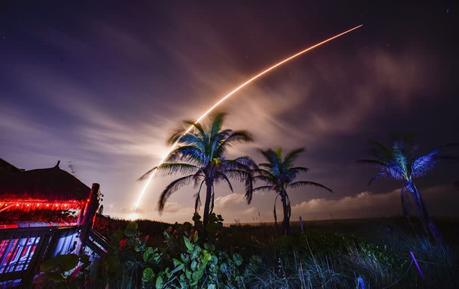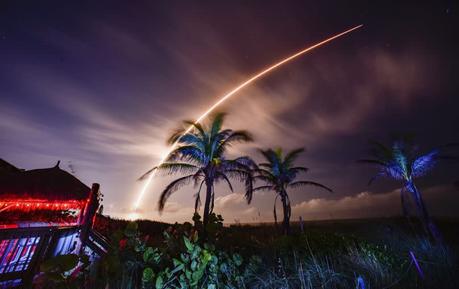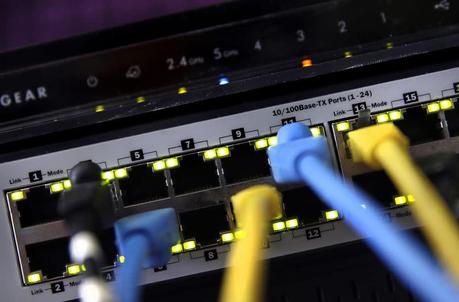There are more than 500 submarine cables worldwide. They often connect continents, from Europe to Australasia, providing internet connectivity to billions of people, many of whom have no idea they even exist.
They are one of those components of our global infrastructure that are fundamental to our way of life and yet largely undervalued. Not appreciated until the internet is disrupted.
And that seems like an increasing possibility. In recent months, Houthi rebels in the Middle East are said to have sabotaged four major communications cables, belonging to the AAE-1, Seacom, EIG and TGN systems, on a route between Saudi Arabia and Djibouti.
Hundreds of disruption incidents per year, conflict or no conflict
The first of these cables is particularly important because it connects Asia, Europe and Africa, winding almost 26,000 kilometers from Hong Kong to southern France.
As Fortune reported earlier this year, the "Red Sea Incident" - an attack and sinking of the Rubymar freighter off the coast of Yemen, believed to have caused damage to undersea internet cables - shows that internet cables, which are essential to our way of communicating, living, are indeed vulnerable.
Although work is currently underway on more than 70 new cables that will cross some 300,000 kilometers of seabed, there are approximately 200 incidents of cable disruption every year - conflict or no conflict.


And yet it would be a mistake to think that the vulnerability of these cables is only about the potential for sabotage or accidental damage in conflict conditions.
The Center for Strategic and International Studies (CSIS), a bipartisan, nonprofit policy research organization and think tank that analyzes global issues, has shed light on the susceptibility of submarine cables - described as the "soft underbelly of the global economy" - to disruption .
The story continues
Its findings have been reiterated and amplified by the Atlantic Council and in a US Congressional investigative report.
Although work is currently underway on more than 70 new cables that will cross some 300,000 kilometers of seabed, there are approximately 200 incidents of cable disruption every year - conflict or no conflict.
Satellite connections are not a match
We cannot prevent earthquakes and current abrasions. Nor can we put an end to fishing or shipping if that were desirable.
So we face a dilemma: we need internet connectivity, and yet the means by which we get it are constantly at risk - even more so as the world becomes more volatile and connected.
One solution is satellite internet, the best-known provider of which is Elon Musk's Starlink.
With the proliferation of optical communications links between satellites, data moves with volume and speed in the space between satellites. However, if you move that data from [...] point-to-point on the ground is hampered by the physics of RF downlinks from the satellites to the ground.


But even though this provides coverage for some 70 countries, it is no match for underwater cables in the amount of data it can transmit from one point to another on Earth, and its limitations are imposed on it by the physics of RF -downlinks from space to another. ground.
Furthermore, it still relies on a physical infrastructure for data routing. In other words, it shares some of the vulnerabilities of submarine cabling.
With the proliferation of optical communications links between satellites, data moves with volume and speed in the space between satellites.
However, moving that data from continent to continent or from point to point on the ground is hampered by the physics of RF downlinks from the satellites to the ground.
Meanwhile, optical technology is advancing
What can transmit data at similar speeds to submarine internet cables are optical ground stations (OGS).
A network of these is capable of sending and receiving information at speeds more than a thousand times faster than the radio frequency (RF) connections on which satellite internet depends.
We can hope for peace; but if recent years are anything to go by, we can reasonably expect geopolitical volatility and the need for investment in security-enhancing technology to increase.


Because OGSs rely on point-to-point laser communications, they are also incredibly resilient. It is very difficult to intercept such a narrow, focused beam of light that connects the Earth with satellites, and the small possibility of interception is very easy to defend.
And because they use a mesh satellite network, they have no geographical limitations, as submarine cables do. You can set up an OGS in a part of the world that is safe and accessible.
Finally, the historical problem that plagues laser communications - that certain conditions, such as atmospheric turbulence, can degrade the quality of the link - has been overcome in recent years, thanks to the development in Europe, a world leader in photonics, of innovative techniques that ' shaping light'.
Let's look beyond land and sea
Governments around the world must look beyond land and sea to maintain the internet connectivity we all depend on.
We can hope for peace; but if recent years are anything to go by, we can reasonably expect geopolitical volatility and the need for investment in security-enhancing technology to increase.
Meanwhile, the impact of data flow disruption will increase across the world.
Undersea internet cables are at risk. This endangers internet access for everyone in Europe and beyond.
We need to give the global internet a resilient layer to support it. Fortunately, the technology exists.
Jeff Huggins is president of Cailabs USA. At Euronews we believe that all opinions matter. Contact us at [email protected] to send pitches or submissions and join the conversation.